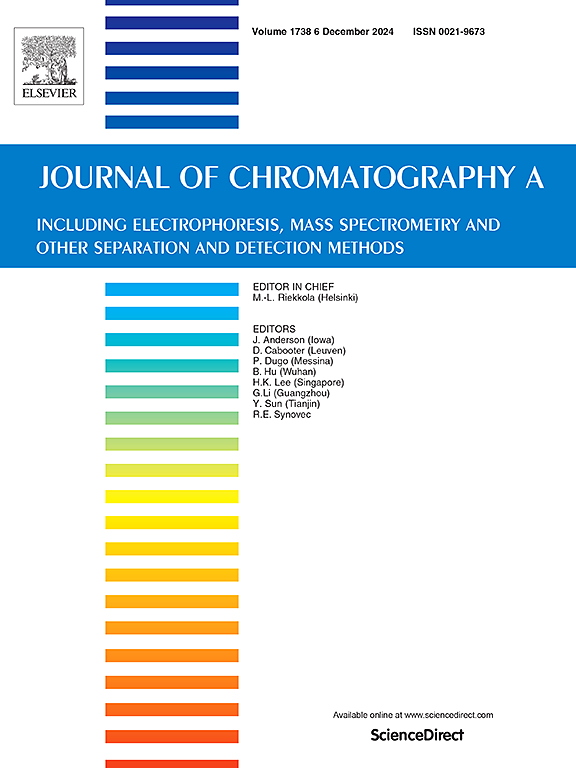Modelling the mass transfer of a polysaccharide-based protein A chromatography membrane with a bimodal porous structure
IF 3.8
2区 化学
Q1 BIOCHEMICAL RESEARCH METHODS
引用次数: 0
Abstract
Efficient and scalable purification methods are essential to meet the growing global demand for monoclonal antibodies. Membrane chromatography is a method to intensify antibody purification processes due to its high throughput. In this study, we present the development of a mass transfer model for the protein A affinity membrane Sartobind® Rapid A. Experimental breakthrough curves performed at residence times between 3 and 60 s exhibit dynamic binding capacities at 10 % breakthrough between 30 and 50 g/L. In contrast to conventional media, this material shows n unusual pattern with precise superposition of breakthrough curves above 80 % breakthrough and finally tailing off in a prolonged saturation phase. Confocal laser scanning microscopy images of the membrane material reveal two regimes in the diameter range of ∼5 to 20 µm, one where convective flow occurs and another where diffusive transport is dominant. The chromatographic workstation and the membrane housing were modelled separately using a system of continuously stirred tank reactors and dispersive plug flow reactors. A modified general rate model, taking various diffusive paths inside the stationary phase into account was able to reproduce the experimentally observed trends. The developed model is useful for process design and scale-up of antibody purification on Sartobind® Rapid A membranes.
以多糖为基础的蛋白质的传质建模:具有双峰多孔结构的层析膜
高效和可扩展的纯化方法对于满足全球对单克隆抗体日益增长的需求至关重要。膜层析因其高通量而成为加强抗体纯化过程的一种方法。在这项研究中,我们提出了蛋白a亲和膜Sartobind®Rapid a的传质模型的发展。在停留时间3到60秒之间进行的实验突破曲线显示,在30到50 g/L之间的10%突破时,动态结合能力。与传统介质相比,该材料显示出一种不同寻常的模式,突破80%以上的突破曲线精确叠加,最终在延长的饱和阶段逐渐消失。膜材料的共聚焦激光扫描显微镜图像显示在直径范围为~ 5至20 μ m的两种状态,其中一种发生对流流动,另一种发生扩散传输。色谱工作站和膜外壳分别使用连续搅拌槽式反应器和分散塞流反应器系统进行建模。一个修正的一般速率模型,考虑了固定相内的各种扩散路径,能够再现实验观察到的趋势。该模型可用于Sartobind®Rapid A膜上抗体纯化的工艺设计和放大。
本文章由计算机程序翻译,如有差异,请以英文原文为准。
求助全文
约1分钟内获得全文
求助全文
来源期刊

Journal of Chromatography A
化学-分析化学
CiteScore
7.90
自引率
14.60%
发文量
742
审稿时长
45 days
期刊介绍:
The Journal of Chromatography A provides a forum for the publication of original research and critical reviews on all aspects of fundamental and applied separation science. The scope of the journal includes chromatography and related techniques, electromigration techniques (e.g. electrophoresis, electrochromatography), hyphenated and other multi-dimensional techniques, sample preparation, and detection methods such as mass spectrometry. Contributions consist mainly of research papers dealing with the theory of separation methods, instrumental developments and analytical and preparative applications of general interest.
 求助内容:
求助内容: 应助结果提醒方式:
应助结果提醒方式:


